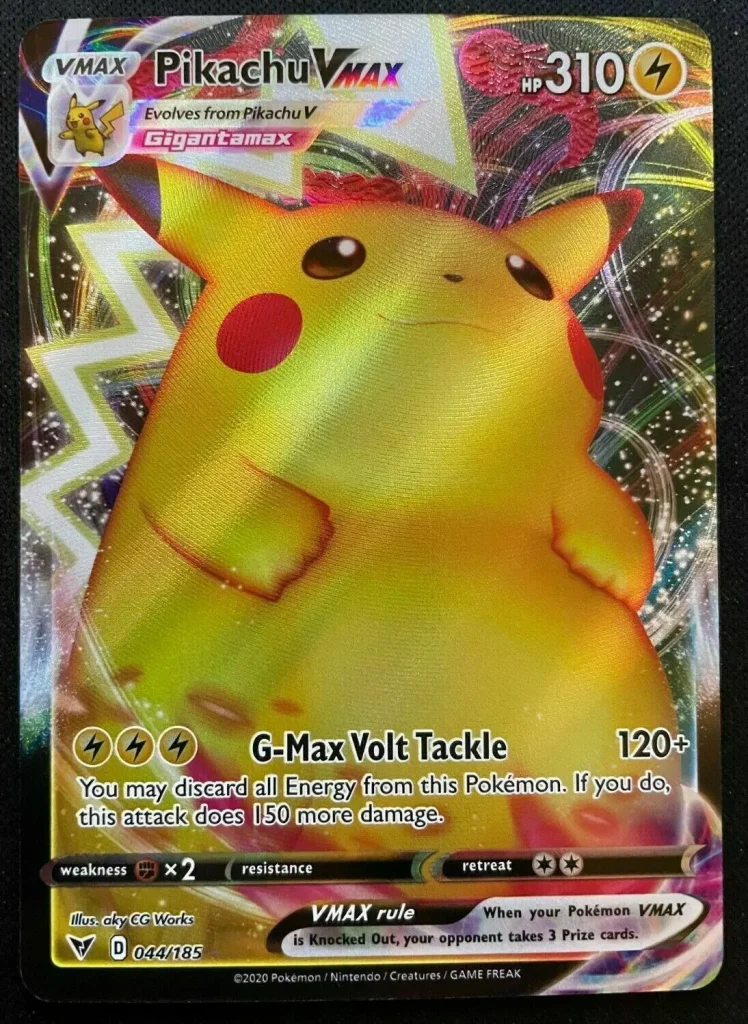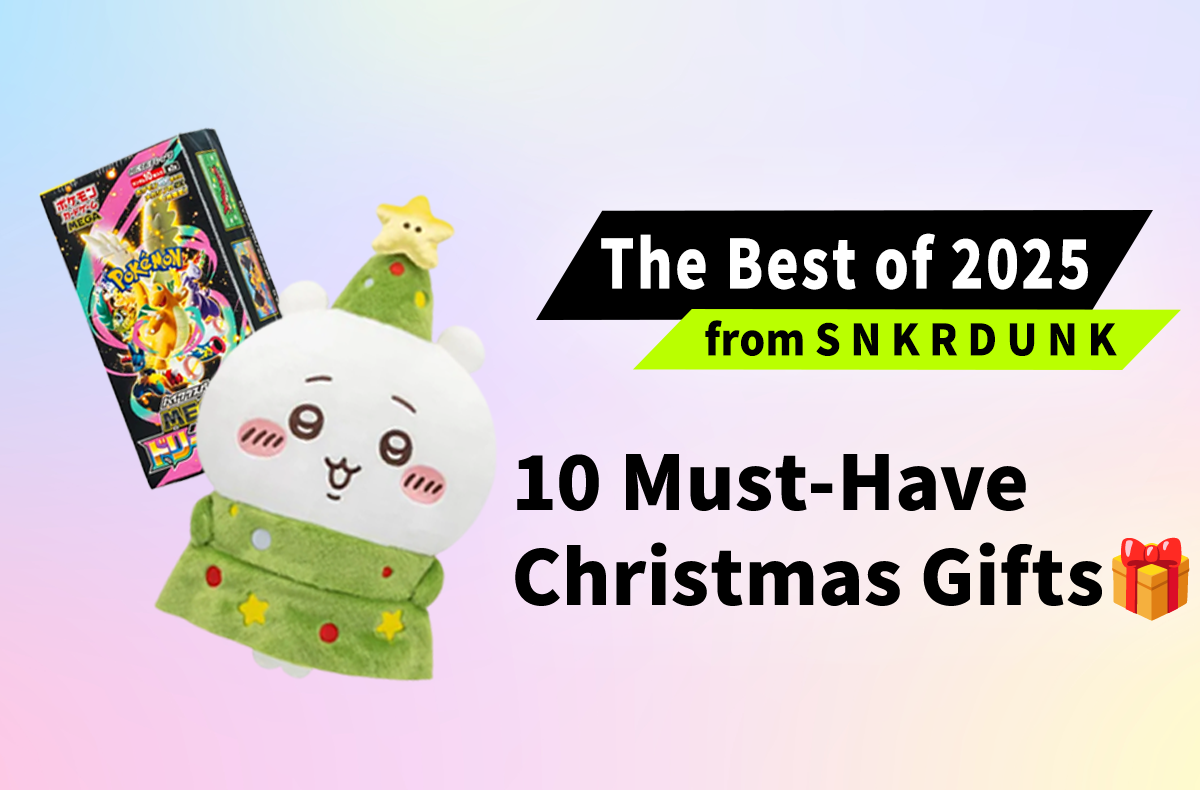Holo or Reverse Holo? Entering the Shiny World of Holographic Pokémon Cards
Understanding the basics about the different types of holofoil (holographic foil) Pokémon cards.
There are numerous reasons to love the world of Pokémon, including its rich history, nostalgic childhood affinity, and engaging gameplay. Even for those unfamiliar with the legacy IP, the artwork on Pokémon cards is universally appreciated; however, some cards inherently shine above the others: holographic Pokémon cards, also known as holofoil/holo cards.
Some are more detailed, atmospheric, or unique, but before we can start to appreciate them, you might ask…


Umbreon ex SAR [SV8a 217/187] and Pikachu ex SAR [SV8 132/106]:
Two of our SNKRDUNK Card of the Year 2024 Nominees
What Are Holographic Pokémon Cards?
Holographic Pokémon cards, also known as holofoil, holo, foil, or reverse holo cards, are special variants distinguished by a shiny, reflective foil treatment. This can be employed either on the card’s artwork (holo) or background (reverse holo), making them more compelling and typically rarer than their non-holographic counterparts.

Main Types of Holo Pokémon Cards
1. Regular Holographic Cards
Regular holographic Pokémon cards have a holographic foil effect only on the Pokémon’s image area. The rest of the card, including the background and text, remains non-foil. Regular holofoil cards are usually rare pulls from booster packs and are highly sought after by collectors. They have a black star (★) rarity symbol and are generally more valuable than regular rare cards.
2. Reverse Holographic Cards
Reverse Holographic Pokémon cards feature the foil effect on the entire card except for the artwork, which remains non-foil. This means the card’s background, text, and borders are shiny. Reverse holos exist not only for rare cards but also for common and uncommon cards, making them more available than regular holofoil rares—but collectible nonetheless.

3. Special Holographic Patterns
Over the years, Pokémon TCG has introduced various holofoil patterns that differ in design and texture. Some examples of notable patterns include:
![Druddigon P [BW-P 201/BW-P]](https://snkrdunk.s3.ap-northeast-1.amazonaws.com/en/magazine/wp-content/uploads/2025/04/24164719/Druddigon-P-BW-P-201BW-P.webp)
Tinsel Holofoil: Used from the Black & White to Legendary Treasures sets, featuring horizontal stripes across the image and, in Japanese cards, a tinsel effect on the border.

Sheen Holofoil: Introduced in the XY era, with diagonal light refracting patterns that vary by language edition (Japanese, Korean, International).

Crosshatch Holofoil: Typically awarded at Play! Pokémon events feature a crosshatch pattern often applied to the card background.
![Black Kyurem [216/BW-P]](https://snkrdunk.s3.ap-northeast-1.amazonaws.com/en/magazine/wp-content/uploads/2025/04/24174532/Black-Kyurem-216_BW-P.webp)
Cracked Ice Holofoil: Also called Broken Glass or Shards, first seen in Platinum Series Theme Decks and continuing into Sword & Shield, characterized by a cracked ice-like pattern over the card, except sometimes the Pokémon image.

Water Web Holofoil: The usual holofoil pattern from Sun & Moon to Cosmic Eclipse, meant to resemble flowing water waves.
Other unique patterns: Including energy symbol patterns, Poké Ball motifs, and tile designs introduced in various expansions such as EX series, Diamond & Pearl, Sun & Moon, Sword & Shield, and Scarlet & Violet sets.



4. Specialty Holographic Cards and Variants
There are also unique holofoil card types introduced with special mechanics or aesthetics.
- Pokémon-GX, Pokémon LEGEND, Pokémon LV.X, Pokémon Prime, and Pokémon Star: These cards often feature special holofoil treatments, combined with unique gameplay features and symbols, making them distinctive within the holographic category.



- Alternate Arts and Full Art Foils: Modern sets include alternate art cards with holofoil effects that cover more of the card, sometimes excluding the border, adding to the visual diversity.



- Shiny Vault and Secret Rares: These feature shiny Pokémon with gold sparkles and textured starbursts, often with full-art holofoil treatments, making them highly prized.



Summary Table of Key Holographic Types
| Type | Foil Location | Description | Era/Example Sets | |||
| Regular Holofoil | Pokémon artwork only | Classic holo effect on the Pokémon image | Most sets, including Base, XY, etc. | |||
| Reverse Holofoil | Card background and text | Foil effect on everything except artwork | Legendary Collection onwards | |||
| Tinsel Holofoil | The pattern varies by language | Striped holo effect, border in Japanese cards | Black & White to Legendary Treasures | |||
| Sheen Holofoil | Diagonal light refraction | The pattern varies by language | XY era | |||
| Cracked Ice Holofoil | Cracked ice pattern | The pattern varies by language. | Platinum onwards | |||
| Crosshatch Holofoil | Background | Includes GX, LEGEND, Prime, and Star cards | Play! Pokémon events | |||
| Water Web Holofoil | Wavy water pattern | Flowing water-like pattern | Sun & Moon to Cosmic Eclipse | |||
| Specialty Holofoil | Various | Includes GX, LEGEND, Prime, Star cards | Various sets |
Conclusion
Holofoil or holographic Pokémon cards come in many forms, from the standard, shiny Pokémon artwork to intricate patterns covering the card background or its entirety. These variations not only enhance the visual appeal but also affect their rarity and collectibility. Recognizing the distinctions between regular holofoils, reverse holofoils, and the various special patterns allows collectors and players to appreciate the diversity and history of their design.
Follow us on:
More SNKRDUNK Features:
SNKRDUNK Now Offers “No Shrink” Pokémon TCG Boxes! Expert Tips to Spot Real vs. Fake
Pokémon TCG Standard Rotation: How It Works and How It Impacts Card Value
[Pokémon TCG] All The Glory of Team Rocket [SV10] Rarest SAR Cards
PSA 1LR+ Slabs: What ONE PIECE Card Game Collectors Need to Know
Panini vs. Topps: Clash of the Sports Card Titans
Topps Baseball Cards: What Are They?

















![Dyson x PORTER Dyson OnTrac PORTER limited-edition headphones and shoulder bag [Release Date/Price/Where To Buy]](https://snkrdunk.s3.ap-northeast-1.amazonaws.com/en/magazine/wp-content/uploads/2025/12/05143501/20251203035223-0.jpg)

![Nike Air Jordan 11 “Gamma Blue” (2025) [Release Date/Price/Where To Buy]](https://snkrdunk.s3.ap-northeast-1.amazonaws.com/en/magazine/wp-content/uploads/2025/12/04190959/20251130014632-4.png)
![UNDEFEATED x Nike Air Max 95 SP 2 Colors [Release Date/Price/Where To Buy]](https://snkrdunk.s3.ap-northeast-1.amazonaws.com/en/magazine/wp-content/uploads/2025/12/04185509/20251126024245-0.png)
![Travis Scott x Nike Air Jordan 1 Low OG 2 New Colorways [Release Date/Price/Where To Buy]](https://snkrdunk.s3.ap-northeast-1.amazonaws.com/en/magazine/wp-content/uploads/2025/12/04184943/20251203020052-2.jpg)
![Supreme 25FW Box Logo Hoodies Week 15 [Release Date/Price/Where To Buy]](https://snkrdunk.s3.ap-northeast-1.amazonaws.com/en/magazine/wp-content/uploads/2025/12/03181143/20251202140506-0.jpg)


